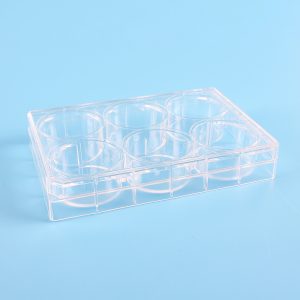Cell Culture Essentials: Using Flasks, Plates and Petri Dishes
- April 22, 2024
- ENQUIRE NOW

Unveiling the Significance of Cell Culture Essentials: Leveraging Flasks, Plates and Petri Dishes
Cell culture is the cornerstone of modern biological research, enabling scientists to study the behavior of cells in controlled environments. Within this realm, the choice of vessels used for cell culture—flasks, plates, and petri dishes—holds paramount importance. These seemingly simple tools are the unsung heroes behind countless breakthroughs in medicine, biotechnology and basic science. In this blog, we’ll delve into the indispensable role these essentials play in facilitating cellular studies.
Understanding Cell Culture Essentials
 Cell culture vessels come in various forms, each serving specific purposes in the cultivation and experimentation of cells.
Cell culture vessels come in various forms, each serving specific purposes in the cultivation and experimentation of cells.
Flasks are versatile vessels designed for the propagation and expansion of cells in suspension. Their rounded bottoms facilitate the uniform distribution of cells and nutrients, ensuring optimal growth conditions. With options like Erlenmeyer flasks and T-flasks, researchers can scale their cultures according to experimental needs. Moreover, the vented caps or filters on flasks allow for gas exchange, crucial for maintaining physiological conditions within the culture.
Importance of Using Cell Culture Flasks
- Scalability: Flasks offer the flexibility to scale up cell cultures from small to large volumes, accommodating diverse experimental requirements.
- Uniform Growth: The design of flasks promotes the even distribution of cells, minimizing clumping and ensuring consistent growth throughout the culture.
- Gas Exchange: Vented caps or filters facilitate the exchange of oxygen and carbon dioxide, mimicking physiological conditions essential for cell viability.
Cell culture plates, provide a flat surface for the attachment and growth of adherent cells. These plates come in various formats, including multi-well plates and dishes with specialized coatings for specific cell types. Researchers utilize plates for applications such as cell proliferation assays, drug screening and microscopy.
Importance of Using Cell Culture Plates
- High Throughput Screening: Multi-well plates enable simultaneous testing of multiple conditions, accelerating research and discovery.
- Controlled Experiments: Well-defined compartments in plates allow for precise control over experimental variables, facilitating reproducible results.
- Compatibility: Plates are compatible with a range of analytical techniques, from immunofluorescence staining to high-content imaging, enhancing their utility in diverse research applications.
 Petri dishes, named after the German bacteriologist Julius Richard Petri, are shallow, cylindrical containers with lids. While traditionally used for bacterial culture, Petri dishes find extensive applications in cell biology for tasks like colony isolation, cell plating and sample storage.
Petri dishes, named after the German bacteriologist Julius Richard Petri, are shallow, cylindrical containers with lids. While traditionally used for bacterial culture, Petri dishes find extensive applications in cell biology for tasks like colony isolation, cell plating and sample storage.
Importance of Using Cell Culture Dishes
- Versatility: Petri dishes serve multiple purposes, from simple cell observation to more complex experimental setups like clonal expansion assays.
- Observation and Manipulation: The transparent nature of Petri dishes allows for easy visualization of cells under a microscope, facilitating observation and manipulation.
- Sterility: With the ability to seal lids, Petri dishes provide a sterile environment conducive to cell culture, minimizing contamination risks.
Key Considerations for Cell Culture Success
a) Sterility
Maintaining sterility is paramount in cell culture to prevent contamination, which can compromise experimental results. Proper aseptic technique, including thorough disinfection of work surfaces, use of sterile reagents, and regular testing of cell lines for mycoplasma contamination, is essential for ensuring the integrity of cell cultures.
b) Cell Adhesion and Growth
The choice of cell culture vessel can significantly impact cell adhesion and growth. Surface treatments, such as coating with extracellular matrix proteins or polymeric substrates, can enhance cell attachment and proliferation, particularly for anchorage-dependent cell lines. Additionally, proper handling and incubation conditions, including temperature, humidity and gas composition, play a crucial role in promoting cell growth and viability.
c) Experimental Flexibility
Different cell culture vessels offer varying degrees of experimental flexibility. While flasks are ideal for scaling up cultures and maintaining large cell numbers, plates offer the advantage of parallel experimentation and high-throughput screening. Petri dishes, on the other hand, are well-suited for microscopy and visual inspection of cells.
Conclusion
 In the realm of cell culture, the significance of flasks, plates, and petri dishes cannot be overstated. These seemingly mundane vessels form the foundation upon which groundbreaking discoveries are made, enabling researchers to unravel the mysteries of cellular behaviour and develop innovative therapies.
In the realm of cell culture, the significance of flasks, plates, and petri dishes cannot be overstated. These seemingly mundane vessels form the foundation upon which groundbreaking discoveries are made, enabling researchers to unravel the mysteries of cellular behaviour and develop innovative therapies.
Whether it’s scaling up cell production in flasks, conducting high-throughput screenings in plates, or observing cellular phenomena in petri dishes, these essentials are indispensable tools in the arsenal of every cell biologist. As technology advances and research evolves, the role of cell culture essentials will continue to evolve, driving progress in fields ranging from regenerative medicine to cancer biology.
To know more our new and extensive range of labware, visit our website www.plasticus.com or email us at info@plasticus.com





